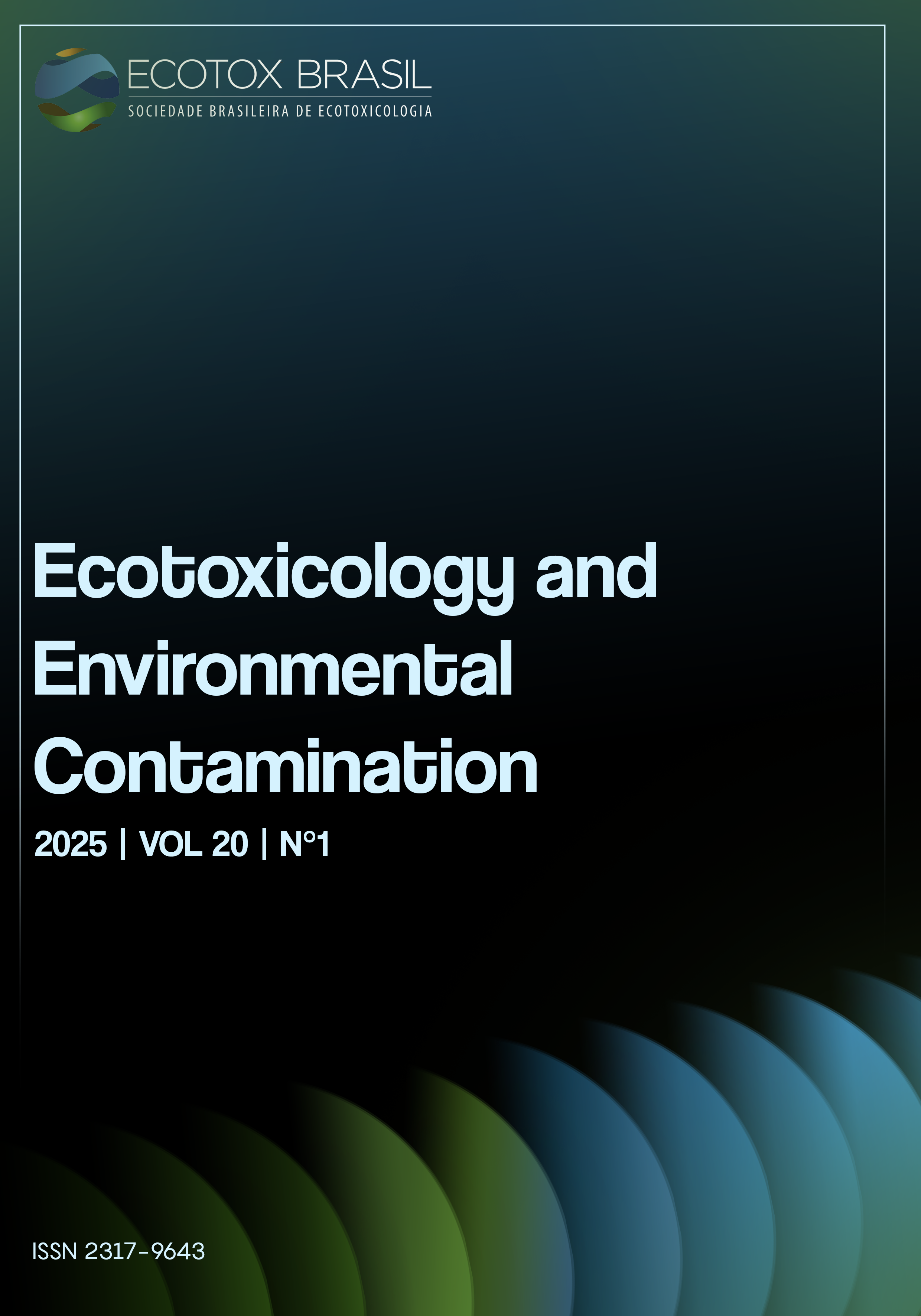Melanomacrophage Centers as a Histological Indicator of the Influence of Land Use on the Health of Prochilodus lineatus (Vallenciennes, 1837): Comparison between Two Neotropical Rivers
DOI:
https://doi.org/10.5132/eec.2025.01.04Keywords:
Biomarker; Prochilodontidae; histopathology; fish; rural influence; urbanization.Abstract
This study evaluated the hepatic structural integrity of Prochilodus lineatus, a fish species susceptible to contaminants, collected in two rivers with distinct environmental conditions in the Sorocaba River basin, SP, Brazil. The analysis focused on melanomacrophage centers (MMCs), hepatic structures essential for the immune system and the response to xenobiotics. The specimens were captured in September 2023 in the Sorocaba River, characterized by high urbanization, and on the Ipanema River, which is better preserved, with protected riparian forest and located in a conservation unit. Subsequently, the livers of the fish were subjected to histological procedures, followed by morphometric analysis of the MMCs using Fiji/Image J software. The comparison between the specimens from the two rivers revealed a significant increase in the dimensions of the MMCs in fish from the Sorocaba River compared to those from the Ipanema River. These findings corroborate previous studies that identified increased MMCs as a biomarker of immune stress and pollutant exposure. Although widely used as biomarkers in ecotoxicology, the presence and response of MMCs can vary between species, requiring careful application. This study emphasizes the relevance of biomonitoring in rivers and highlights P. lineatus as a sensitive and efficient bioindicator of pollution, particularly in impacted environments such as the Sorocaba River.
Downloads
Published
How to Cite
Issue
Section
License
Copyright (c) 2025 Ecotoxicology and Environmental Contamination

This work is licensed under a Creative Commons Attribution 4.0 International License.
Copyright © 2006 ECOTOX-Brasil
Copyright notice: It is a condition for publication that manuscripts submitted to this journal have not yet been published and will not be simultaneously submitted or published elsewhere. By submitting a manuscript, the authors agree that copyright for their article is transferred to the Sociedade Brasileira de Ecotoxicologia (ECOTOX-Brasil) if and when the article is accepted for publication. The copyright covers the exclusive rights to reproduce and distribute articles, including reprints, photographic reproductions or any other reproduction of a similar nature, including translations. No part of this publication may be reproduced, stored in a retrieval system or transmitted in any form or by any means, electronic, mechanical, photocopying, recording or otherwise, without permission of the publisher.
Notice: While every effort is made by the EEC, editors and editorial board to see that no inaccurate or misleading data, opinions or statements appear in this journal, they wish to make it clear that the contents of the articles and advertisements published herein are the sole responsibility of the contributors or advertisers concerned. Accordingly, the EEC, the editorial board and editors and their respective employees, officers and agents accept no responsibility or liability whatsoever for the consequences of any inaccurate or misleading data, opinion or statement.








